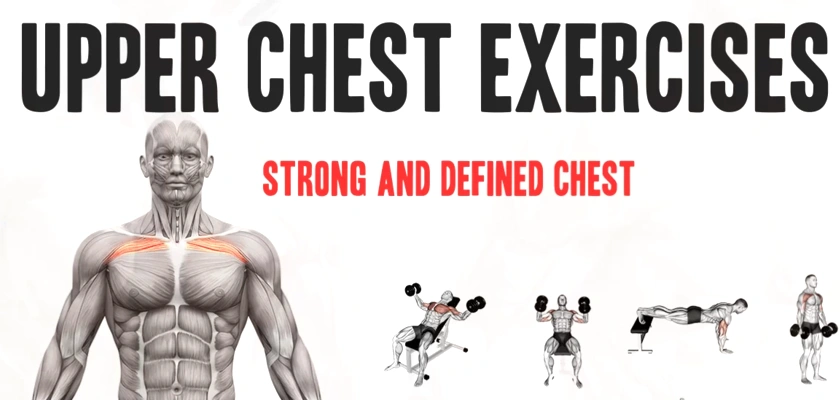If you’ve ever searched how to build upper chest, you’re not alone — most people struggle with it. You train hard, bench heavy, chase that pump. But somehow, the top of your chest stays flat.
So you adjust the bench. Switch dumbbells. Try slower reps, stricter form. Still doesn’t feel right. Your shirt hangs loose at the top. The mirror says it all.
Meanwhile, the guy next to you? Three sets in. Upper chest full and round. You’re wondering what he’s doing different.
Truth is, building upper chest isn’t just about effort. It’s about doing the right things, the right way.
This guide shows you how.
Understanding the Upper Chest Anatomy
If you want to know how to build upper chest muscles, you need to understand how the muscle actually works.
Most people don’t — that’s why no matter how much they train, that upper area stays flat.
Here’s what really matters:
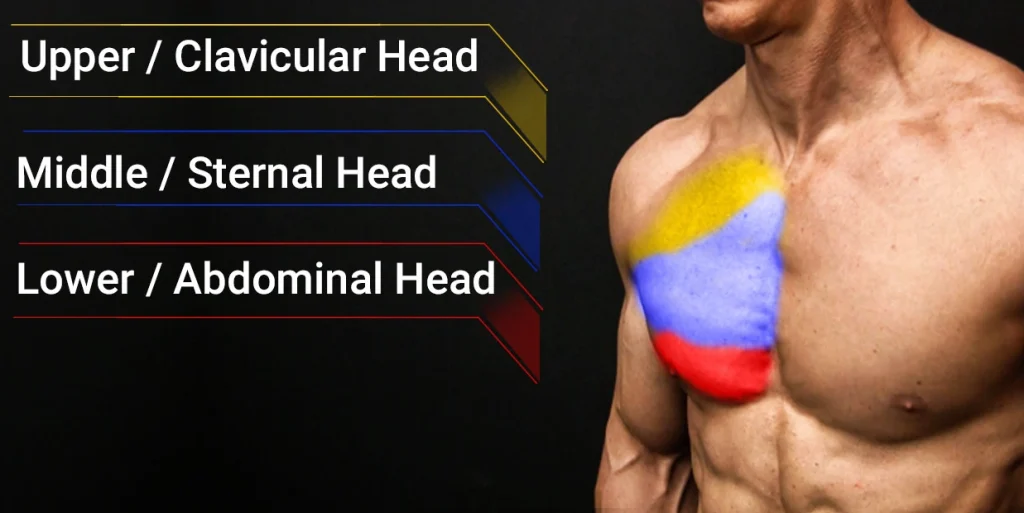
🔸 It’s part of your chest — not a separate muscle
Your upper chest is just the top portion of your main chest muscle. It’s called the clavicular head, which simply means the part near your collarbone.
- Same muscle, different angle
- If your movement isn’t angled right, it barely gets used
🔸 Angle is everything
Flat bench hits the middle chest. Decline targets the lower chest. But for your upper chest? You need an incline.
- Best range: 25° to 45°
- Too flat? Not enough tension
- Too steep? Your shoulders take over
- Quick test: if your shoulders are sore, not your chest, something’s off
🔸 Direction matters — up and in
The upper chest fibers run upward and slightly inward. So your movements should follow that path.
- Incline presses and low-to-high flys match the direction
- Pushing straight out mostly hits your mid-chest
🔸 Easy to get wrong without noticing
Even with the right setup, poor control ruins the effect.
- Fast reps or sloppy form = wasted effort
- If you don’t feel it in your upper chest, it’s probably not working
Understand how it moves, and you’ll finally learn how to train it right.
Let’s talk exercises next.
Best Exercises for How to Build Upper Chest Fast
You now know how the upper chest actually works — and why most people miss it.
The next step? Choosing the right moves.
To build your upper chest properly, these six exercises hit from the right angle and get real results.
Incline Barbell Bench Press

Heavy and direct — this one builds real size.
- How it’s done: Set the bench to 30–45°. Lower bar to upper chest. Press up smooth and controlled.
- Why it’s effective: It loads the upper chest hard and allows heavier weights than dumbbells.
- Who it’s good for: Lifters focused on strength and overall mass.
Incline Dumbbell Press
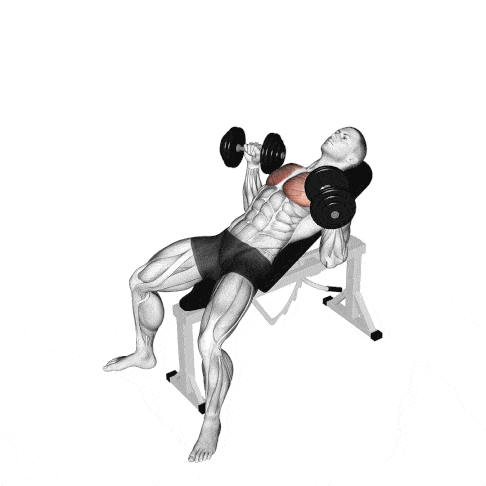
Same angle as barbell, but more freedom and feel.
- How it’s done: Lower dumbbells deep, press up and slightly inward.
- Why it’s effective: Allows full range and isolates each side. Great for balance and stretch.
- Who it’s good for: Anyone who wants to feel the chest work — not just lift heavy.
Incline Dumbbell Fly
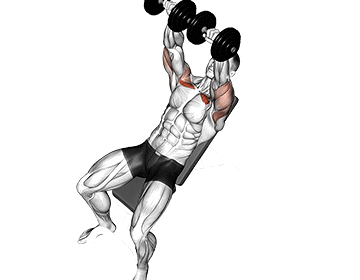
Great for isolating and stretching the upper chest.
- How it’s done: Arms slightly bent. Open wide, bring hands together up top.
- Why it’s effective: Stretches the chest under control with no triceps stealing the work.
- Who it’s good for: Best used later in the workout to burn out the muscle.
Low-to-High Cable Fly
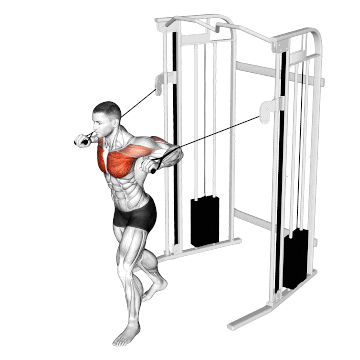
Perfect angle — this one follows the chest fibers exactly.
- How it’s done: Pull from low to high. Squeeze hard at the top.
- Why it’s effective: Constant tension with full control and exact muscle path.
- Who it’s good for: Anyone chasing definition, detail, or a solid pump.
Decline Push-Up (Feet Up)
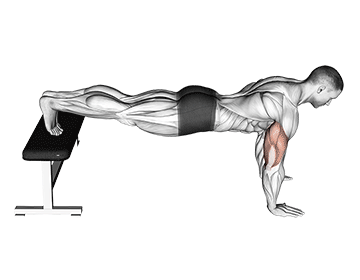
No weights? No problem — this one still hits.
- How it’s done: Feet on a bench. Lower slow. Push up strong.
- Why it’s effective: The angle mimics incline press and targets the upper chest.
- Who it’s good for: Home training, beginners, or burnout finishers.
Incline Machine Press
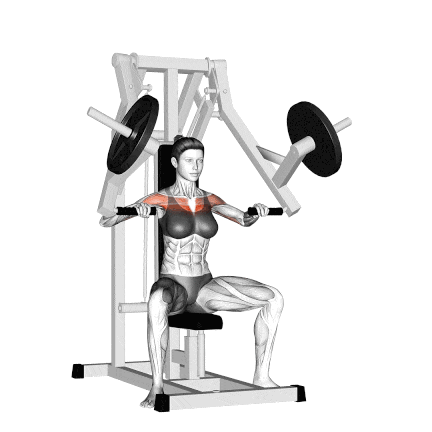
Safe, simple, and focused — all chest, no distractions.
- How it’s done: Sit tall, grip handles, press through the machine’s path.
- Why it’s effective: No balance needed. Lets you lock in and push hard.
- Who it’s good for: Great for beginners, or anyone too tired for free weights.
✅ Pick three or four of these. Rotate them smart. Stay consistent. Your upper chest will catch up — finally.
Common Mistakes to Avoid
Knowing how to build upper chest is one thing — but doing it wrong still kills your progress.
These mistakes might seem small, but they quietly ruin your upper chest gains.
1、Incline bench too steep
- Problem:Bench set at 60°, 70°… looks intense, but it’s not chest work anymore
- Why it fails:Shoulders take over — chest barely does anything
- Fix it:Keep incline between 25° and 45°. That’s your sweet spot
2、Lifting too heavy too soon
- Problem:You grab the heaviest dumbbells and grind through bad reps
- Why it fails:No control, no mind-muscle connection — just momentum
- Fix it:Use a weight you can control for 8–12 clean reps
3、Rushing through reps
- Problem:Reps are too fast, bouncing the weight up and down
- Why it fails:No tension = no growth. The muscle barely gets challenged
- Fix it:Slow down. 2 seconds down, 1 second up, full stretch and squeeze
4、Starting with flat bench every time
- Problem:Flat bench becomes your comfort zone
- Why it fails:Mid and lower chest grow, upper chest stays ignored
- Fix it:Start your chest days with an incline movement when you’re fresh
5、Not focusing on the muscle
- Problem:You just move weight, hoping your chest “gets some of it”
- Why it fails:Shoulders and arms steal the work — chest does nothing
- Fix it:Lower the weight, watch yourself in the mirror, focus on the squeeze
✅Fix these, and your upper chest training instantly gets better.
How to Build Upper Chest: Workout Plans
Not everyone trains the same — and you shouldn’t.
Your upper chest plan should match your experience, strength, and recovery level. So here are three sample routines: beginner, intermediate, and advanced.
🟢 Beginner Plan (Just Getting Started)
| Exercise | Sets | Reps | Tips |
|---|---|---|---|
| Incline Machine Press | 3 | 10–12 | Slow reps, full range |
| Decline Push-Up (feet up) | 3 | As many | Keep body straight, don’t rush |
| Incline Dumbbell Press | 2 | 8–10 | Light weight, focus on form |
| Low-to-High Cable Fly | 2 | 12–15 | Squeeze at the top, stay tight |
🟡 Intermediate Plan (Been Training a While)
| Exercise | Sets | Reps | Tips |
|---|---|---|---|
| Incline Barbell Press | 4 | 6–8 | Push hard, but keep it clean |
| Incline Dumbbell Press | 3 | 8–10 | Pause at the bottom, full stretch |
| Low-to-High Cable Fly | 3 | 12–15 | Control the squeeze |
| Decline Push-Up | 2 | As many | Burn out at the end |
🔴 Advanced Plan (1+ Years Training)
| Exercise | Sets | Reps | Tips |
|---|---|---|---|
| Incline Barbell Press | 4 | 6 | Heavy, but no sloppy reps |
| Incline Dumbbell Fly | 3 | 10–12 | Stretch deep, return slow |
| Low-to-High Cable Fly | 3 | 15–20 | Big squeeze, steady movement |
| Incline Machine Press | 3 | 10–12 | Finish with control |
| Decline Push-Up (optional) | 2 | As many | Do if you’ve got anything left |
✅Train upper chest 1–2 times a week.
Pick 3–4 of these exercises each session. Feel the burn. Get a little sore. That’s when growth happens.
You’ve got the plan. You’ve got the right exercises. Now just don’t mess up the simple stuff.
If you’re not eating enough, or sleeping like crap, your chest won’t grow — no matter how perfect your form is.
This stuff takes time. The upper chest is slow for most people. But if you stay consistent, train smart, and actually recover between sessions — it’ll come.
No secrets. No shortcuts. Just show up, do the work, and let your body do the rest.
It’s that simple.

Hi, I’m Alex Carter, part of the editorial team at Leadman Fitness. We specialize in crafting premium custom racks, cable machines, functional trainers, and strength accessories for home and commercial gyms. With a background in competitive powerlifting and gym design consulting, I’ve spent years testing gear under heavy loads and optimizing layouts for efficiency.
I focus on translating real-world user frustrations—like space limitations, budget constraints, or durability needs—into actionable solutions. By collaborating directly with our engineers and facility owners, I ensure our custom equipment evolves to solve the unspoken challenges lifters face daily. What I share isn’t textbook advice; it’s battle-tested insight from racks I’ve welded, cables I’ve replaced, and gym floors I’ve trained on.
